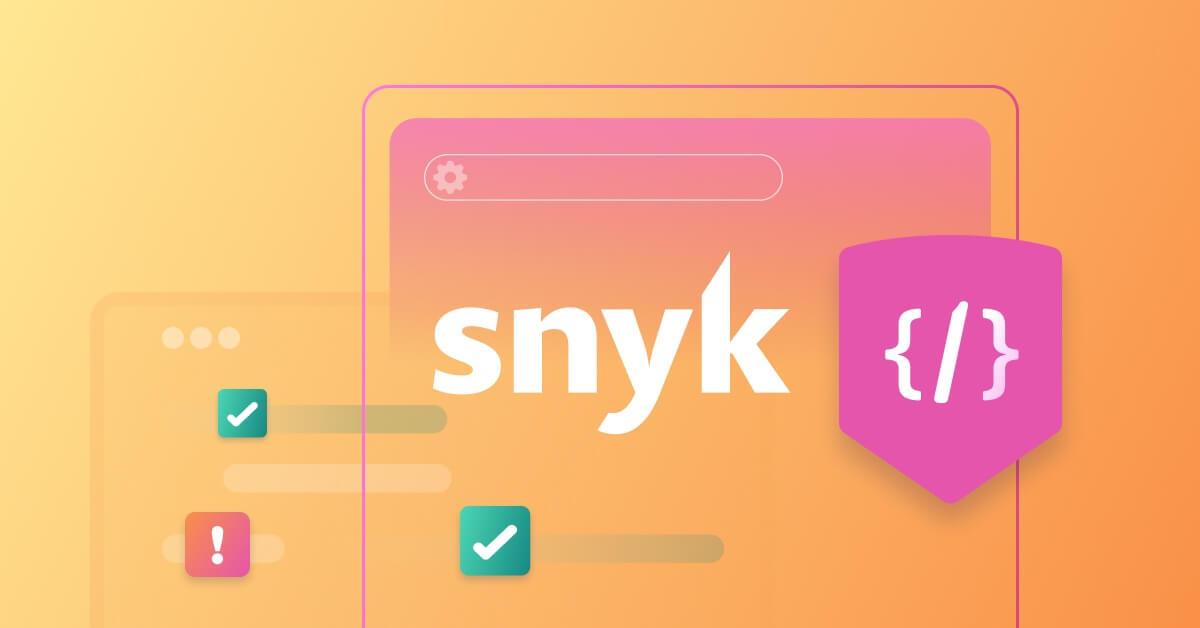Analyze Taint Analysis Faster with Improved Contextual Dataflow in Snyk Code
2024年10月10日
0 分で読めますSnyk Code is a powerful tool designed to help developers identify and automatically fix vulnerabilities in their source code. It eliminates flow interruptions and repeated work by detecting and resolving security issues in real time with over 80% autofixing accuracy. It integrates seamlessly with your development workflow, providing real-time feedback on security issues directly within your IDE, CLI, or SCM.
Snyk Code leverages advanced static analysis techniques, including taint analysis, to provide comprehensive security coverage for your applications.
Taint analysis and its importance in code security
Taint analysis is a critical technique in code security that helps identify how untrusted data flows through a program, potentially leading to security vulnerabilities. By tracking the flow of tainted (untrusted) data from sources (input points) to sinks (output points), developers can detect and mitigate risks such as SQL injection, cross-site scripting (XSS), and other injection attacks. This proactive approach ensures that vulnerabilities are caught early in the development cycle, reducing the risk of exploitation in production environments.
The role of dataflow analysis in identifying taint vulnerabilities
Dataflow analysis is a fundamental component of taint analysis. It involves tracking the flow of data through various paths in the code to identify how tainted data propagates from sources to sinks. This process helps pinpoint the exact locations where vulnerabilities may occur, enabling developers to understand the context and impact of the issue.
For example, consider the following code snippet:
def get_user_input():
return input("Enter your name: ")
def display_user_input(user_input):
print(f"Hello, {user_input}")
user_input = get_user_input()
display_user_input(user_input)
In this example, get_user_input is a source of tainted data, and display_user_input is a sink where the tainted data is used. Dataflow analysis helps track the flow of user_input from the source to the sink, allowing us to identify potential vulnerabilities.
Improved contextual dataflow in Snyk Code
Snyk Code has introduced an enhanced feature that significantly improves the contextual dataflow analysis for taint vulnerabilities. This update simplifies the dataflow view, making it easier for developers to understand and address security issues in their code.
In this update, when analyzing a taint vulnerability, users can now use visual indications to show only the critical steps necessary to understand the vulnerability. When a taint vulnerability is detected, the improved dataflow view allows developers to quickly assess whether the issue is a true positive and determine the appropriate fix.
This streamlined process reduces the time spent analyzing irrelevant dataflow steps, leading to faster remediation of security issues and helping reduce the noise and clutter often accompanying complex dataflows. This allows developers to focus on what truly matters.
Example screenshots capturing the “before” state
(this is from lirantal/nodejs-goof repo):


(the following is from lirantal/NodeGoat repo):


Challenges with traditional taint analysis
Some common issues developers and security engineers face with traditional taint analysis are related to their overall experience from that exercise, such as time-consuming work and difficulty understanding the data flow that contributes to more time and effort spent on triaging security vulnerabilities.
Challenge 1: Analyzing irrelevant dataflow steps
Traditional taint analysis often presents developers with a convoluted web of dataflow steps, many irrelevant to the actual vulnerability. This added noise makes it difficult to pinpoint the exact path of tainted data from the source to the sink.
For example, consider a simple SQL injection vulnerability:
def get_user_input():
return input("Enter your username: ")
def query_database(username):
query = f"SELECT * FROM users WHERE username = '{username}'"
execute_query(query)
user_input = get_user_input()
query_database(user_input)
In this scenario, traditional taint analysis might include every function call and variable assignment, even those that do not contribute to the vulnerability. This can overwhelm developers with unnecessary information, making it harder to identify the critical steps where user input becomes part of an SQL query.
Challenge 2: Confusion and difficulty in understanding the reported vulnerabilities
The presence of irrelevant dataflow steps can lead to confusion and difficulty understanding the reported vulnerabilities.
Developers may struggle to discern which parts of the code are genuinely problematic or benign. This confusion can result in wasted time and effort as developers sift through extraneous details to find the root cause of the issue. Who has time for that?
For instance, in the previous example, if the taint analysis tool also included steps like logging the user input or passing it through non-relevant functions, developers might spend unnecessary time investigating these steps, leading to frustration and potential oversight of the actual vulnerability. This is exactly the problem an improved DX Snyk aims to solve.
Conclusion
The improved contextual dataflow in Snyk Code is a game-changer for developers and security teams. By simplifying the dataflow view and focusing on the essential steps, Snyk Code makes it significantly quicker and easier to triage and fix security issues. This enhancement is available to all Snyk Code users by default and works with any taint vulnerability issue.
By leveraging Snyk Code's improved contextual dataflow analysis, developers can efficiently identify and mitigate taint vulnerabilities, ensuring their applications remain secure, even in the age of AI. Sign up for a free Snyk account here to start securing your code today.
開発時にセキュリティを確保する
Snyk でコードをスキャンして品質とセキュリティの問題を検出し、IDE で修正のアドバイスを表示できます。
